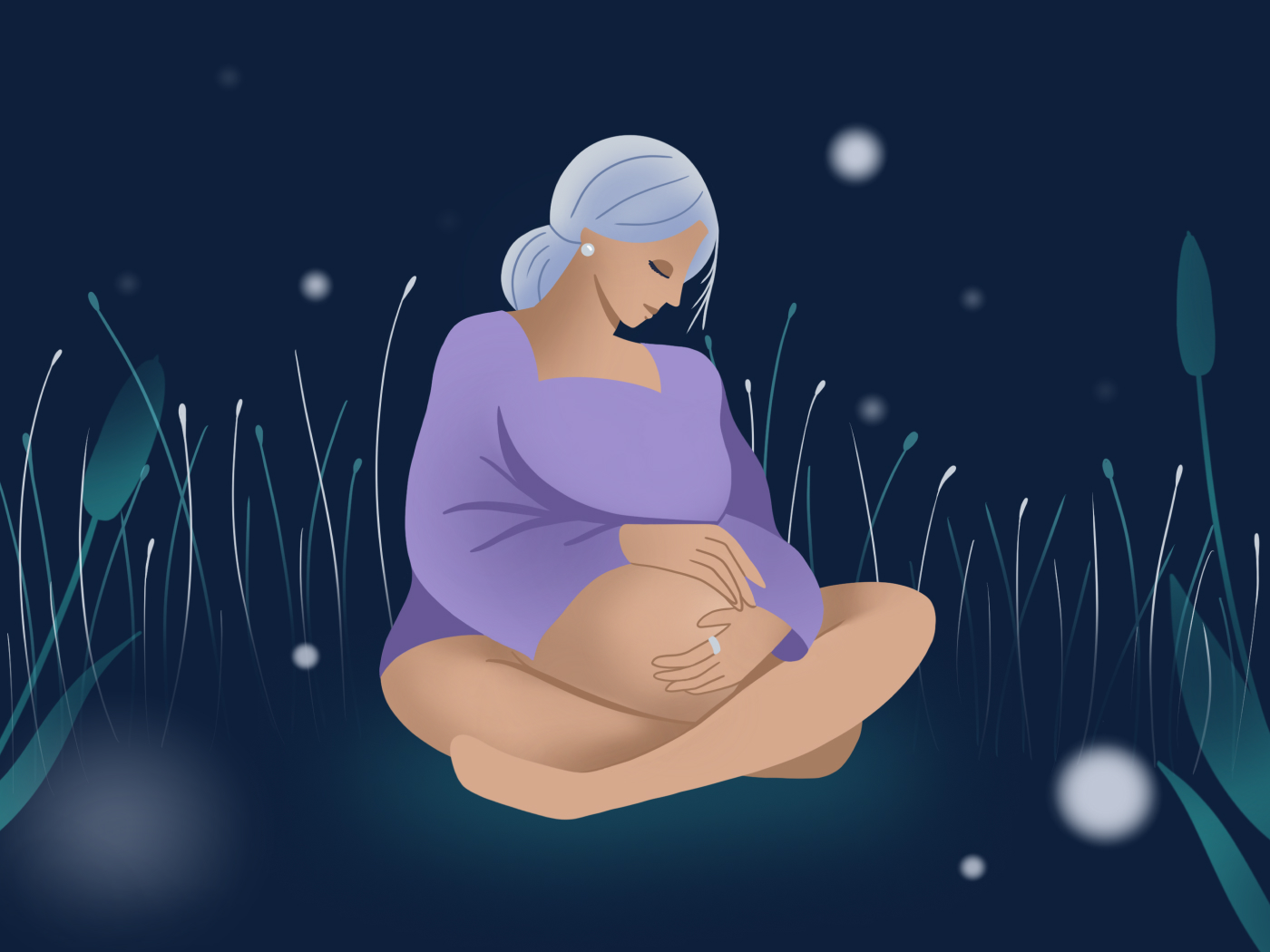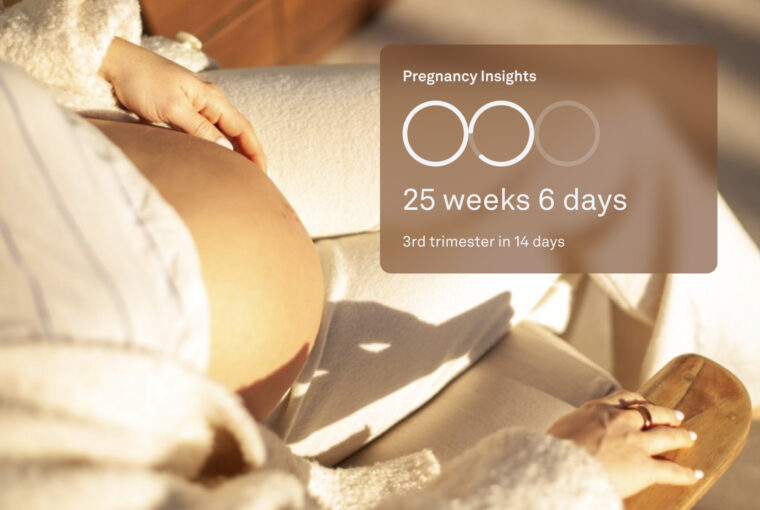Pregnancy Insights is the latest addition to Oura’s growing suite of women’s health features.
With data-driven information and in-app education, Pregnancy Insights is designed to empower mothers-to-be as they progress through each trimester.
A team of scientists, led by Neta Gotlieb, PhD, women’s health product manager and clinical research scientist at Oura, has been working hard on this feature based on feedback we’ve received from members.
“Pregnancy is one of the most physiologically significant events in many members’ lives,” Dr. Gotlieb says. “Our goal with this feature is to equip our pregnant members to better know their bodies and take care of their health accordingly. And we’re just getting started — we’ll continue to iterate and develop this feature based on our members’ input.”
Welcome to Pregnancy Insights

Pregnancy brings about big changes in your body, from changes in sleep to varying biometrics.
“Learning about what’s normal, knowing what to expect from the maternal body, and understanding that daily fluctuations are common, can offer much-needed reassurance in a time of uncertainty,” Dr. Gotlieb notes.
Here’s what you’ll find when you opt into the feature.
Gestational Age & Insight Messages
The feature will track your gestational age (how far along you are), providing weekly updates about physiological changes you may experience and see in your Oura data.
For instance, you may see that your resting heart rate spikes after conception, but then it might decrease. Or you may feel reassured to see that your restless sleep mirrors what other expectant moms experience in their first trimester, too.
Note: As your body adapts to pregnancy, you may see daily changes in your readiness contributors, which can affect your Readiness Score. Try to focus on long-term trends in your vitals as opposed to your daily scores.
To learn more about how gestational age and trimesters are calculated on Pregnancy Insights, see below.
RELATED: What Happens to Your Body During Pregnancy, According to Oura Member Data
Educational Content
Pregnancy Insights also features slideshows and content covering topics such as how your vitals or sleep may change as your pregnancy progresses.
This information is based on population-level data and peer-reviewed research, but be aware that your data may deviate from the pattern you see in the Pregnancy Insights content – and that’s okay!
“Although we can characterize the physiological pattern for most pregnancies, every person and every pregnancy is unique and deviations or fluctuations are not necessarily a negative sign,” Dr. Gotlieb explains. “If you have questions about your individual pregnancy, it’s best to speak with your OB-GYN.”
Anonymous Feedback Section
As we continue to iterate on our women’s health products, we welcome feedback! At the bottom of the detail view, you’ll find a link taking you to an external survey to provide anonymous feedback on the Pregnancy Insights feature.
How to Use Pregnancy Insights
You can turn on Pregnancy Insights in the new Women’s Health settings, which you’ll find in the menu at the top left of your home screen. You’ll also be able to opt in after tagging a “Positive Pregnancy Test.”
Once you’ve confirmed your pregnancy, the Cycle Insights homecard will be replaced with a welcome card inviting you to learn more about Pregnancy Insights.
Want to continue tracking your temperature while using Pregnancy Insights? You may have noticed that when you toggle on Pregnancy Insights, you lose access to the Cycle Insights temperature graph. However, you’re still able to track your temperature! Simply go to Readiness –> Temperature –> Trends.
How Trimesters are Calculated on Pregnancy Insights
Did you know that you’re considered pregnant before you even conceive?
When you’re pregnant, you are given an estimated “due date.” This estimated due date assumes a 28-day cycle, with ovulation occurring on day 14. So if you conceive within that cycle, your first day of pregnancy is the first day of your last period! So even though you may not have technically conceived yet, you’re considered pregnant and four weeks into your first trimester.
When you start getting ultrasound pregnancy scans, the sonographer and your doctor may update your gestational age based on fetal size. You can update your estimated due date on Pregnancy Insights once you have this information.
The length of each trimester is defined differently by different organizations. On Oura’s Pregnancy Insights, we are following The American College of Obstetricians and Gynecologists (ACOG)’s definition of trimester length, which is as follows:
- First trimester (first day to 13 weeks and 6 days): The time when fertilization and major organ development occur.
- Second trimester (14 weeks and 0 days to 27 weeks and 6 days): The time of rapid growth and development.
- Third trimester (28 weeks and 0 days to 40 weeks and 6 days): The time when the fetus’s weight increases and the organs mature so they are ready to function after birth.
LEARN MORE: How to Use Pregnancy Insights
About the Oura Expert
Neta Gotlieb, PhD, is a Product Manager and former Lead Clinical Research Scientist at ŌURA researching and developing solutions focused on women’s health. Dr. Gotlieb received her Master’s degree from Tel Aviv University in Biological Psychology where her work focused on how stress impacts immune function and endocrine pathways. She earned a PhD from UC Berkeley where she studied Reproductive Neuroendocrinology and the circadian regulation of menstrual cycles, pregnancy, and birth. Dr. Gotlieb has received the Women in Tech Global Technology Leadership Award and has been named one of the Women of Wearables’ Trailblazing Leaders in Women’s Health and FemTech. She’s also the author of the children’s book Every Body’s Brain.




